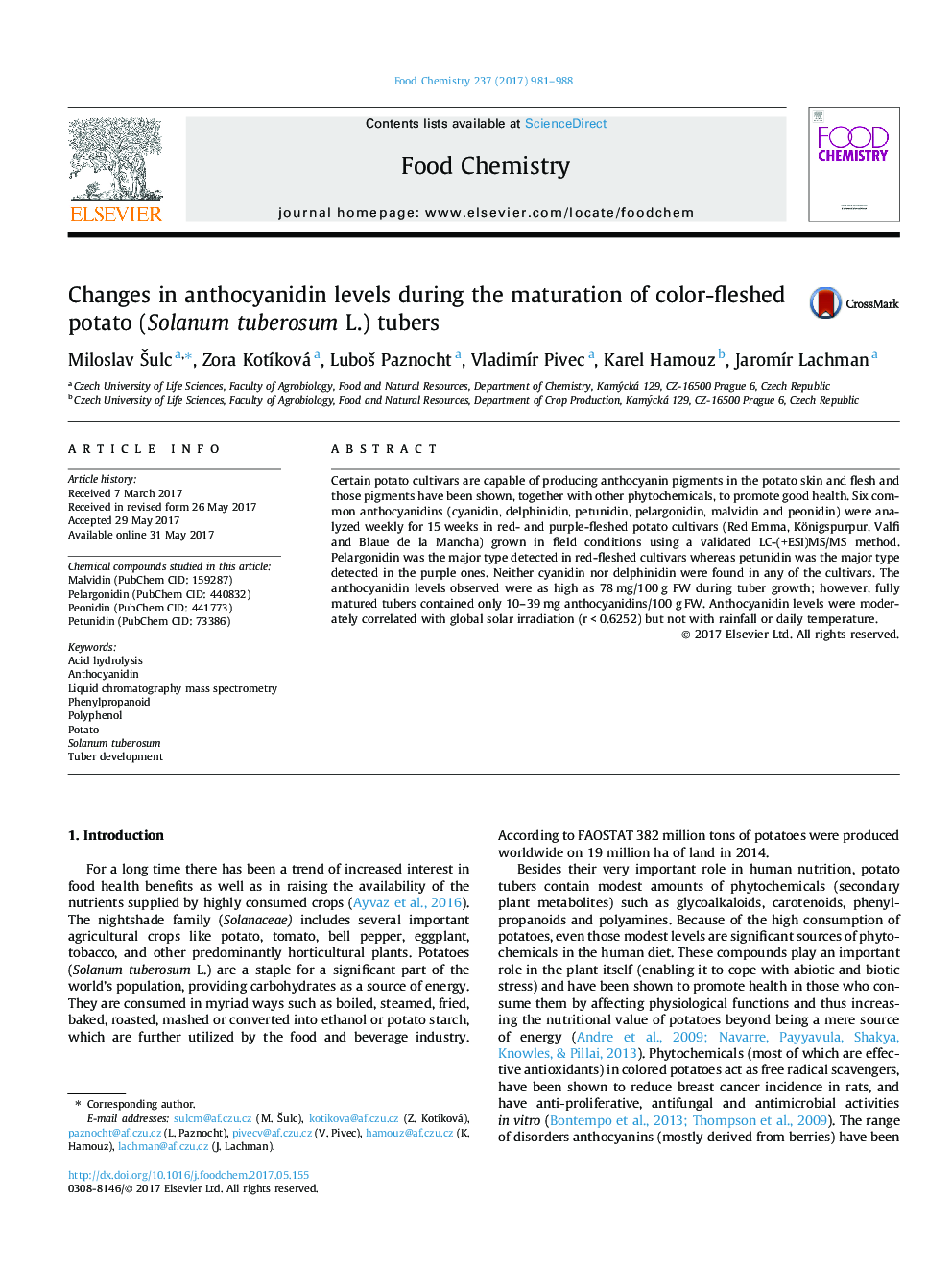| Article ID | Journal | Published Year | Pages | File Type |
|---|---|---|---|---|
| 5132790 | Food Chemistry | 2017 | 8 Pages |
â¢Anthocyanidin content tends to decline during tuber maturation.â¢Peonidin and malvidin contents decline massively during tuber maturation.â¢Large variability in anthocyanidin content was found among plants of the same cultivar.â¢Anthocyanidin content correlates mostly with global solar irradiation.â¢Anthocyanidin contents were highest up to 119 days after planting.
Certain potato cultivars are capable of producing anthocyanin pigments in the potato skin and flesh and those pigments have been shown, together with other phytochemicals, to promote good health. Six common anthocyanidins (cyanidin, delphinidin, petunidin, pelargonidin, malvidin and peonidin) were analyzed weekly for 15 weeks in red- and purple-fleshed potato cultivars (Red Emma, Königspurpur, Valfi and Blaue de la Mancha) grown in field conditions using a validated LC-(+ESI)MS/MS method. Pelargonidin was the major type detected in red-fleshed cultivars whereas petunidin was the major type detected in the purple ones. Neither cyanidin nor delphinidin were found in any of the cultivars. The anthocyanidin levels observed were as high as 78 mg/100 g FW during tuber growth; however, fully matured tubers contained only 10-39 mg anthocyanidins/100 g FW. Anthocyanidin levels were moderately correlated with global solar irradiation (r < 0.6252) but not with rainfall or daily temperature.
